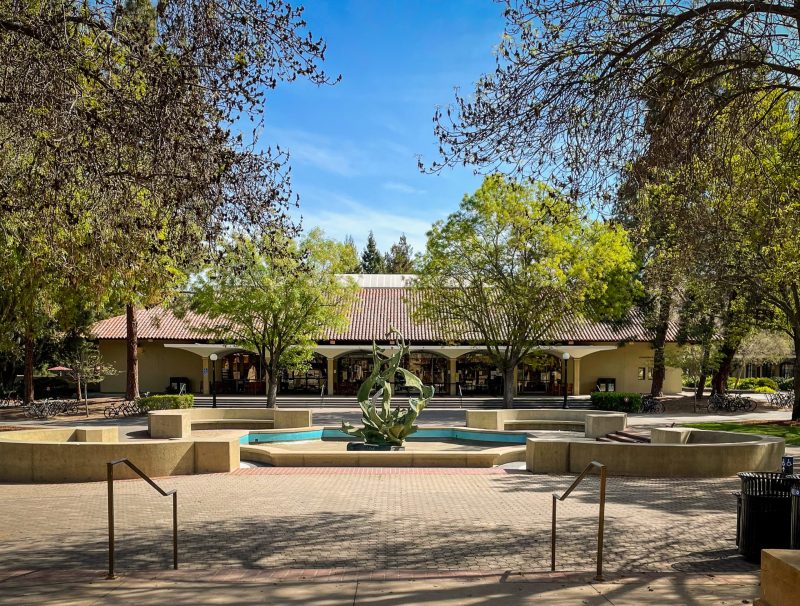Instead of the typical hurried scramble to class during the school year, Chavi Coy ’26 walked through a quiet Main Quad in mid-July, enjoying the peaceful warmth of summer.
It’s a different pace of life, Coy said.
While most students packed up to leave campus in June, about a thousand stayed behind to live on campus over the summer. Students reported experiencing a different, calmer version of Stanford than in other quarters.
Housing options during the summer can range from a few floors in EVGR on the more convenient east side of campus, to Lagunita Court on the more remote west side of campus.
Coy, who went from living on east campus during the school year to west campus during the summer, said, “It is just interesting to be in two different geographical locations and see what goes on.”
For many students, the price of housing plays a significant role in the process of deciding where to stay over the summer.
Students are able to live on campus for an eight-week or 10-week period. With only a handful of available options on campus for Stanford and non-Stanford students, housing rates can get pricey, ranging from $3,142 for the eight-week term to $4,024 for the 10-week term. In addition to the housing price, students have to pay house dues, technology fees and meal plans.
Stanford provides several summer programs for underclassmen, high school students and college students who don’t attend Stanford, including the Stanford Institutes of Medicine Summer Research Program (SIMR) and Summer Undergraduate Research Fellowship (SURF). Stanford also hosts programs for incoming first generation and/or low-income (FLI) frosh, including the Leland Scholars Program and Stanford Summer Engineering Academy.
Many first- and second-year students said these programs were a driving factor in deciding to live on campus.
Between 300 and 500 high school students live on campus during the summer for Stanford’s Summer Session courses.
“It’s a little weird … it’s kind of like the spring when all of the tours were happening,” Hunter Prinz ’26 said, referring to the high school students who live on campus.
As a rising sophomore, this was Coy’s first summer on campus. She said that she found the campus environment very similar to the academic school year.
“I think most people who stay for the summer are underclassmen, generally because a lot of times people will stay here to do research,” Coy said. “I also know that there are also a lot of really cool programs that you can do over the summer with Stanford, especially if you are a first generation low-income student,” Coy said.
Coy chose to stay on campus and work as a summer resident assistant (RA) in Governor’s Corner (GovCo). Every dorm that houses any population of students — including high school students, Stanford students and non-Stanford students — requires RAs.
She said that while Stanford students taking classes during the summer or in undergraduate programs are limited to residences like West Lag and EVGR, summer RAs and employees of the University are required to live in their designated residence hall rooms for the duration of the job. These halls might be unavailable for other Stanford students during the summer but occupied by high school students or non-Stanford affiliates.
Many students agreed that there is an illusion of a full campus during the summer, even though the student population is limited.
“Relatively, there are less people … There are also so many conferences and other things just going on all the time,” Prinz said. “So, we definitely have a full campus, but I would say it’s definitely a much smaller atmosphere.”
Although the general atmosphere on campus during the summer is similar to academic quarters, students said that the dining experience varies greatly from the school year. Some, like Coy, have their own kitchens in their dorms, while others rely on dining halls for every meal.
All undergraduate students are recommended to have a meal plan during the summer, but those living in Mirrielees are not required to have one.
“If you live in EVGR and don’t have a meal plan, they take the stove out … so you either have to be on a meal plan or buy your own food,” Coy said.
Some students opted for off-campus housing because they wanted to be close to family.
“I decided to live [at home] this year because on-campus housing would have been a little pricey for me,” said Soliman Aniss ’24, who lives in the East Bay with his family.
Throughout his time at Stanford, Aniss — who is a FLI student — said that he never lived on campus during the summer because he saw the break as the perfect opportunity to spend time with family.
Students can also choose to find apartments close to campus and in the Bay Area, but these are often unaffordable. Zip codes like Palo Alto and Atherton are extremely expensive; the median home value in Atherton is over $6 million, while the median rent is about $7,400 a month.
“Even with financial aid, not all of it is covered, and so it just didn’t make much sense for me, as a FLI student, to try to make it work,” Aniss said.
